Sequoia National Park is named after the enormous trees that grow there. The largest concentration of sequoia trees in the world is right there! But the park has even more to offer than these amazing trees.
Would you like to learn more about this amazing place? Let’s take a look at some interesting facts about Sequoia National Park.
Subscribe to daily national parks planning tips, travel inspiration and trip ideas and I’ll send you a free PDF
10 Fun Facts About Sequoia National Park
No time right now to discover these fun facts about Sequoia National Park? Pin It and save it for later:
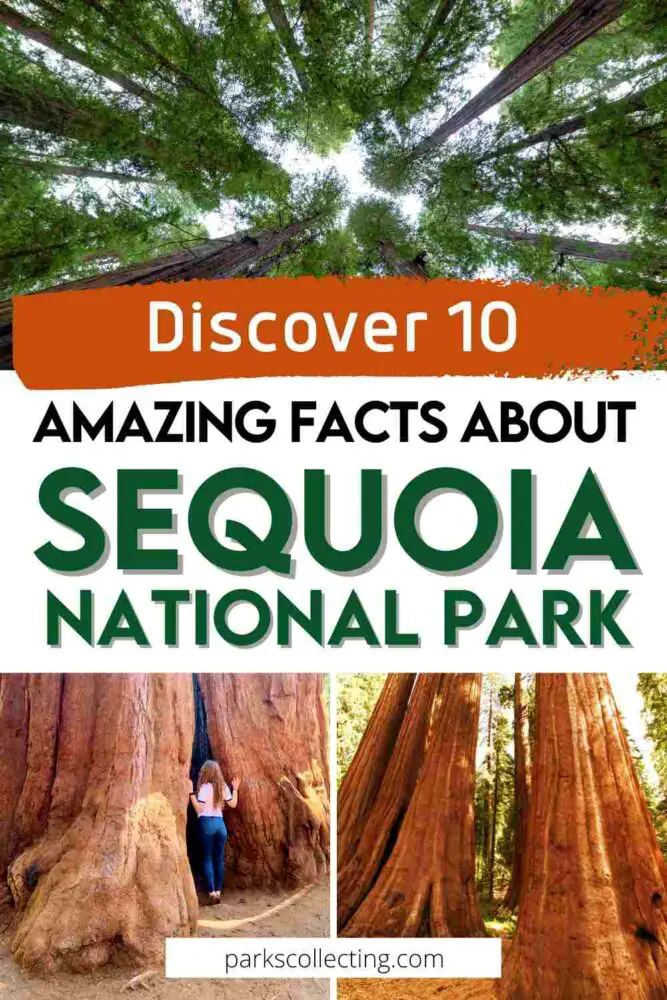
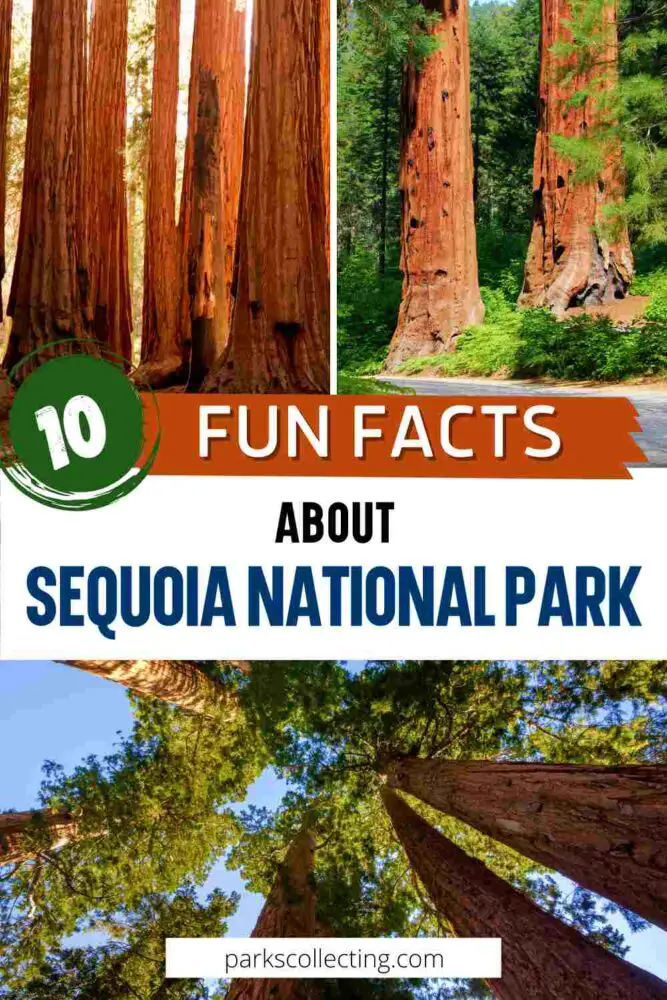
🛏️TOP HOTEL PICK: Check availability now
🚘FIND THE CHEAPEST CAR RENTAL: Search Discover Cars for the best deals
✈️FIND THE CHEAPEST FLIGHTS: Search Skyscanner for the best deals
🧳GET TRAVEL INSURANCE: Get insured with Travelex before you go
📱TAKE AN AUDIO TOUR: Buy an audio tour now
Table of Contents
Basic Facts About Sequoia National Park
⭐ Location: California
⭐ Size: 328,315 acres (865,964 acres with Kings Canyon National Park)
⭐ Number of Visitors each Year: 980,567 visitors in 2023
⭐ Annual Rainfall: 40 to 45 inches. Much of this falls during the winter as snow.
⭐ Highest Sequoia National Park elevation: 14,505 feet (Mount Whitney)
⭐ Lowest Elevation: 1700 feet (at Ash Mountain Entrance)
⭐ Date it Became a National Park: September 25, 1890
10 Fun Facts About Sequoia National Park
Here are 10 fun facts about Sequoia National Park:
1. Sequoia National Park has the largest tree in the world
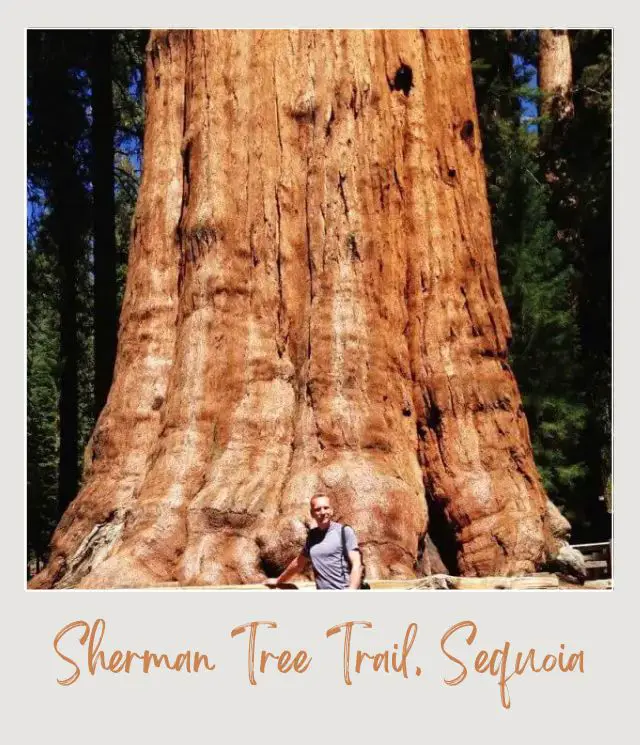
The General Sherman Tree is not just another tree in the forest; it’s a living legend.
As the world’s largest tree measured by volume, it stands as a towering figure at 275 feet tall, its base a staggering 36 feet in diameter!
Nestled in the Giant Forest, this giant sequoia is a species renowned for its enormous size and ancient lifespan. Estimated to be between 2,300 and 2,700 years old, General Sherman is not only big, it’s also one of the oldest living organisms on the planet, a silent witness to millennia of history.
The tree was named after the American Civil War general, William Sherman, by James Wolverton, who once served under the general.
You can walk a paved trail to marvel at this giant up close and ponder the vast timeline this tree represents.
2. The park is home to five of the ten largest trees in the world
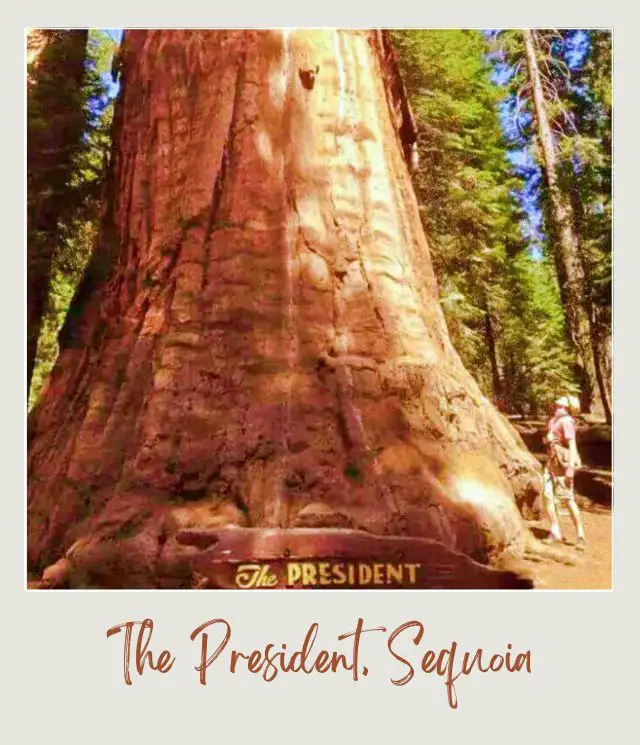
Imagine walking among giants, where the largest trees on Earth tower above you, their massive trunks wider than your living room.
Sequoia National Park is home to five of the ten largest trees in the world, measured by volume. Among these titans are the renowned General Sherman, President, Lincoln, Franklin, and King Arthur.
These ancient sequoias have stood the test of time, each with its own story to tell, and continue to draw visitors from around the globe who are eager to experience their majestic presence.
3. Giant sequoia trees are some of the oldest living organisms on Earth
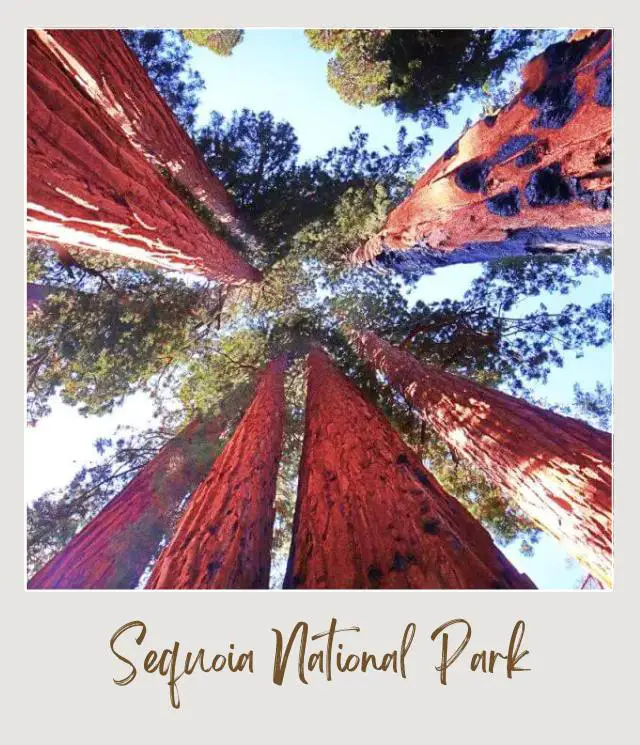
The sequoias of Sequoia National Park are not just famous for their size but also their age. Some of these trees are believed to be over 3,000 years old, making them some of the oldest known living organisms on our planet.
Think about what was happening in the world 3,000 years ago! Ancient Egypt was in decline. The Roman Empire was rising. The Zhou dynasty ruled ancient China. The Mayan empire emerged in Mesoamerica. And all this while, the trees that you can see today were right there, living and growing!
Their longevity is a testament to their resilience and the unique conditions of their environment that allow them to thrive for literally thousands of years.
4. Sequoia National Park has the tallest mountain in the contiguous United States
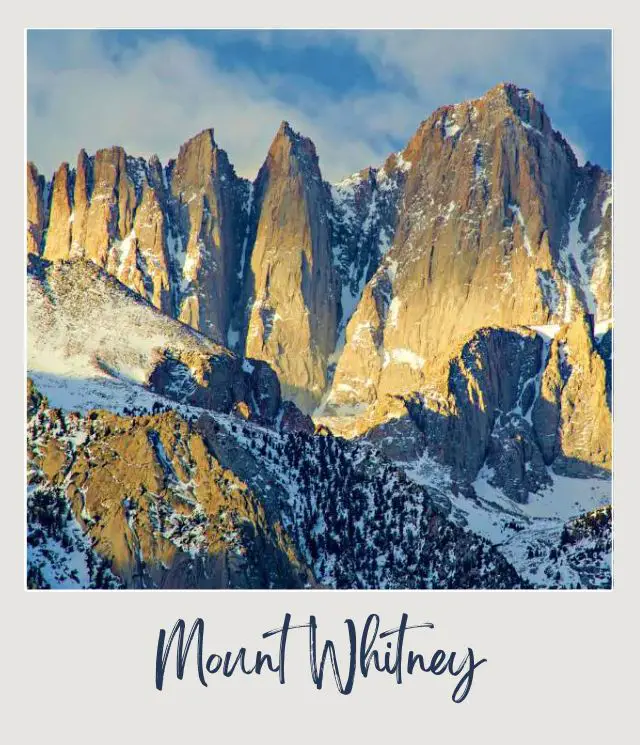
At 14,505 feet, Mount Whitney is the tallest mountain in the lower 48 states. The peak lies at the eastern border of Sequoia National Park, immediately west of the city of Lone Pine.
The mountain was named after Josiah Whitney by the California Geological Survey team that discovered it in 1864. Despite the early failed attempts to summit by Clarence King, Mount Whitney was finally conquered in 1873 by Albert Johnson, Charles Begole, and John Lucas.
Today, you can enjoy breathtaking views of this majestic peak from the Interagency Visitor Center or challenge yourself by trekking the popular Mount Whitney Trail, which ascends over 6,000 feet from the trailhead at Whitney Portal. You won’t be alone – Mount Whitney is the most frequently climbed mountain peak in the Sierra Nevada mountains.
5. You can drive a car through a tunnel carved across a fallen sequoia tree
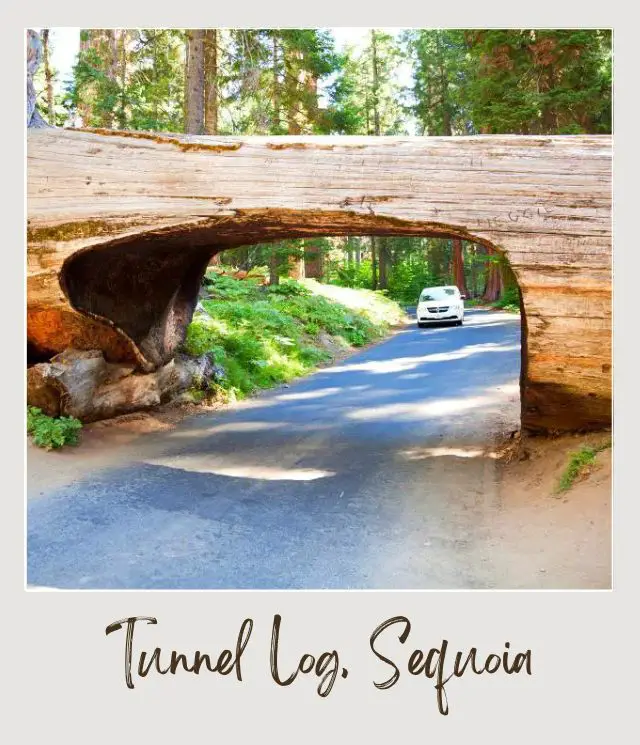
In 1935, a monumental event occurred when a giant sequoia fell across the Moro Rock / Crescent Meadow Road.
It was too big to move, so the Civilian Conservation Corps (CCC) carved a tunnel through its trunk, creating a unique drive-through experience for visitors. This innovative approach turned a natural obstacle into an iconic attraction, allowing guests to literally drive through a piece of Sequoia National Park’s history.
Tunnel Log is located just 0.5 mile (0.8 km) past Moro Rock. As long as your vehicle is less than 8 feet (2.4 meters) tall, you, too, can drive through a fallen Sequoia (there’s a bypass if your vehicle is taller).
6. Sequoias need fire to reproduce
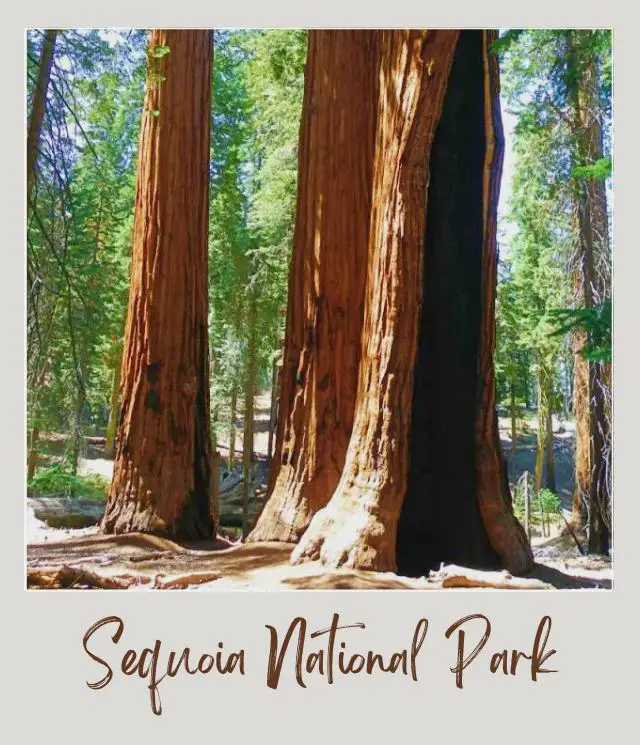
The giant sequoias have a unique and essential relationship with fire. Their cones are serotinous, meaning they only open and release seeds in response to the heat of a fire.
Without fire, the dense canopy and thick layer of duff on the forest floor inhibit the growth and survival of young sequoias. Studies have shown that areas affected by high-intensity fires exhibit the densest and most dominant giant sequoia reproduction compared to other conifers, highlighting the importance of fire in their life cycle.
This ecological dependence on fire is a fascinating aspect of the giant sequoia’s biology, demonstrating the complex interplay between these ancient trees and their environment.
7. The national park is (almost) home to The Nation’s Christmas Tree
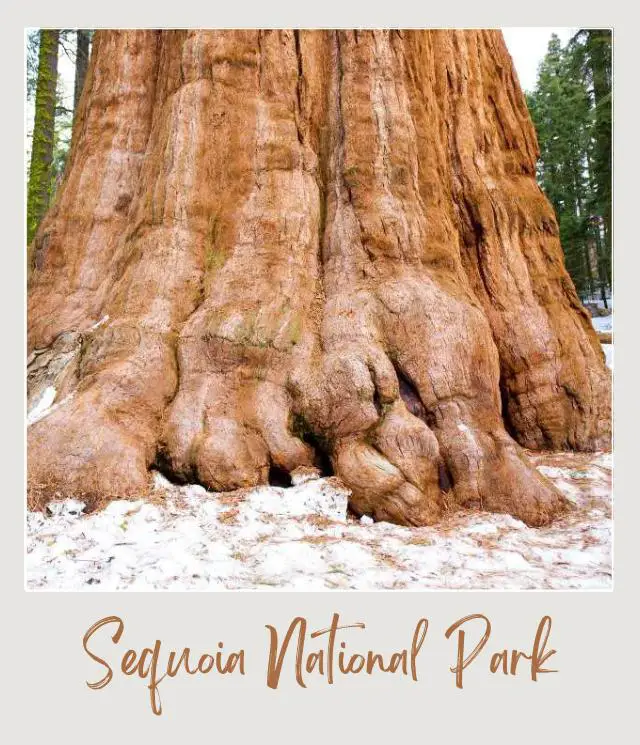
While technically located in the General Grant Grove section of neighboring Kings Canyon National Park, the General Grant Tree holds a special place in the hearts of those who visit the Sequoia region.
This colossal tree, once thought to be the largest before General Sherman took the title*, was named The Nation’s Christmas Tree by President Calvin Coolidge in 1926.
(*Although the controversy continues: in 2012, scientists discovered that if branch volume is included with trunk volume, the President Tree in Sequoia National Park is actually the second largest and the Grant Tree is the third largest).
The General Grant Tree’s storied past includes a naming debate, with credit attributed to either lumberman Joseph Thomas Hardin (he claimed to have named it to honor the Civil War General U.S. Grant in 1862) or Lucretia P. Baker (who claimed to name it in 1867 while on a family camping trip), but its dedication to Ulysses S. Grant is undisputed.
Each year, a ceremony is held at the base of this giant sequoia, celebrating not only its grandeur but also the spirit of the holiday season, a tradition that has delighted generations.
8. Sequoia is the second oldest national park in the United States
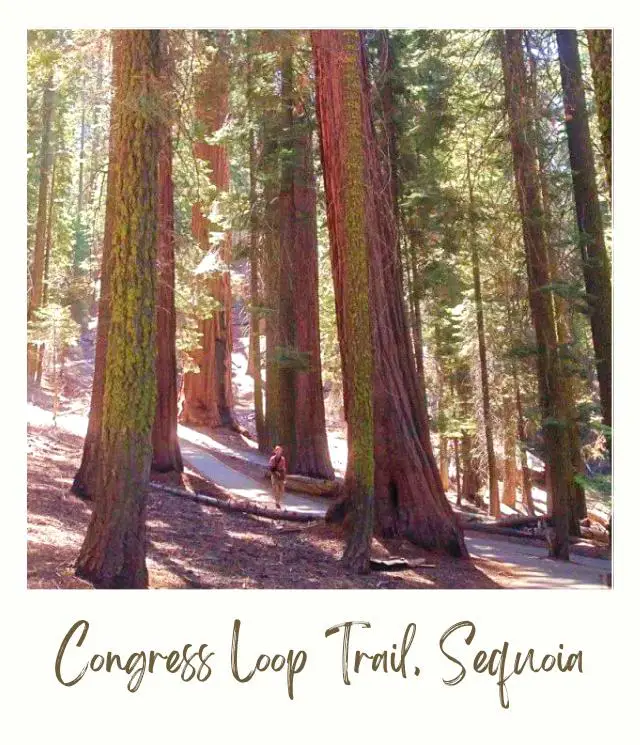
Established on September 25, 1890, Sequoia National Park is a pioneer in America’s national park history. It was created just a few years after Yellowstone, the world’s first national park, with a mission to protect the giant sequoias from logging.
This park’s establishment marked a significant moment in the conservation movement, setting a precedent for protecting natural and cultural treasures across the United States and inspiring the creation of a national park system that is admired worldwide.
9. Sequoia National Park features a Crystal Cave
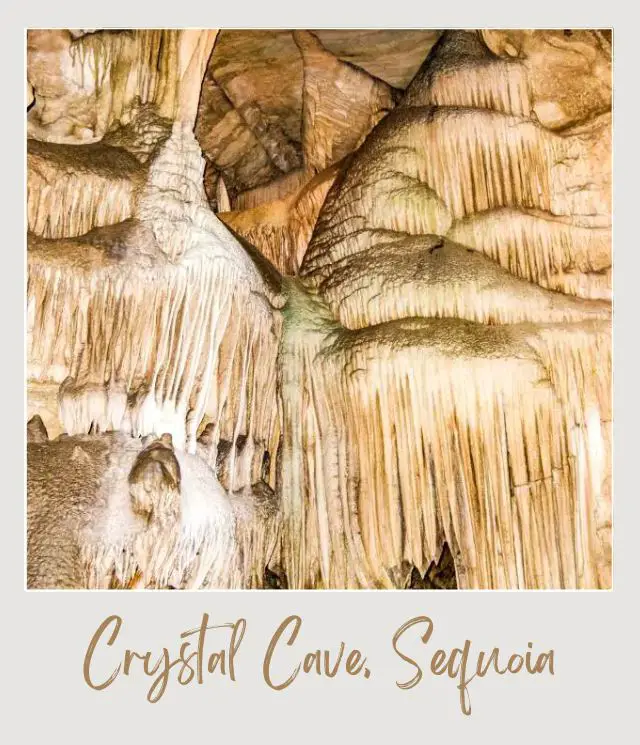
Sequoia National Park isn’t only about trees and mountains. Beneath the towering trees and majestic peaks (or majestic trees and towering peaks 😊) lies a subterranean wonderland known as Crystal Cave.
It’s one of over 200 caves within the park’s boundaries. It’s a marble cavern, with spectacular stalactites and stalagmites.
Discovered by park visitors in 1918, Crystal Cave offers a glimpse into a fragile underground ecosystem. A half-mile loop trail leads through the cave. You can take a tour with a ranger, who will give you insights into the cave’s geologic formations, its role in the park’s ecosystem, and the importance of preserving such delicate natural features.
10. The Giant Forest contains over 8,000 sequoias
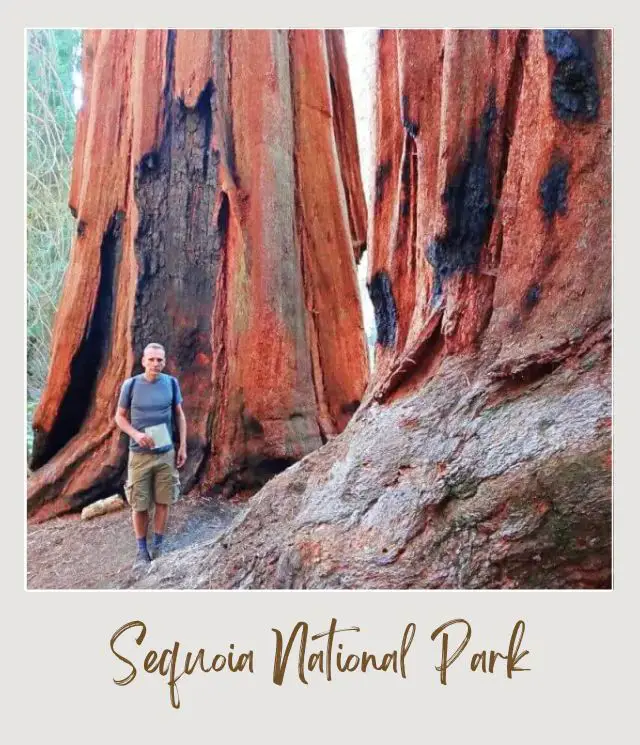
The Giant Forest is aptly named, as it is home to over 8,000 giant sequoias! This grove is a living museum, showcasing these ancient trees’ grandeur and beauty.
Each sequoia here has its own unique character, and together they create an awe-inspiring landscape that encapsulates the essence of Sequoia National Park. Walking through the Giant Forest is like stepping back in time, surrounded by the wisdom of the ages, and it’s an experience that leaves a lasting impression on all who visit.
The best way to see the Giant Forest is by hiking the Congress Trail. Read my Guide To Hiking The Congress Trail for more details.
Subscribe to daily national parks planning tips, travel inspiration and trip ideas and I’ll send you a free PDF
10 Fun Facts About Sequoia National Park
More Information About Sequoia National Park
Are you feeling inspired to visit Sequoia National Park? Start planning your trip now with these guides:
⭐ Sequoia National Park Guide
⭐ Planning A Trip to Sequoia National Park: 7 Big Mistakes to Avoid
⭐ The Congress Trail Guide
⭐ How to Get to Sequoia National Park
⭐ All The Airports Near Sequoia National Park
⭐ The Closest Airport To Sequoia National Park
⭐ The Best Time To Visit Sequoia National Park
⭐ Visiting Sequoia National Park: What To Expect Throughout the Year
⭐ 10 Tips For Visiting Sequoia National Park
⭐ Best Vacation Rentals Near Sequoia National Park
Do you have any other fun facts about Sequoia National Park to share? I’d love to hear them. Join my private Facebook group National Parks Collectors and comment and let me know (you can also pick up extra planning tips, share your photos and stories with other national park lovers and more).
If you liked this article, Pin It to your Sequoia National Park board!


💡 Are you just starting to think about taking a national parks trip? Get Inspiration
‼️ Are you looking for helpful tips for visiting US national parks? Read articles that share useful tips on a range of national-park related issues
💻 Are you starting to plan a trip to Sequoia National Park? Read my Guide to Sequoia National Park
🛏️ Are you looking for a place to stay near Sequoia National Park? Find an Airbnb near Sequoia National Park
💲 Are you ready to book your trip? Use these Planning and Booking Resources
📖 Do you want to read a book about US national parks? Check out my Recommended Reading Lists
About the Author
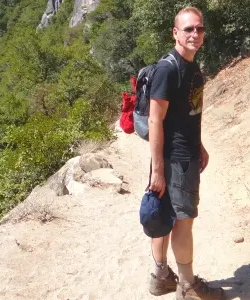
James Ian is a national park, camping and hiking expert.
He has dedicated his life to travel, visiting more than 80 countries, all 7 continents and most of the national parks in the United States. With over 35 years experience in the travel industry, James has worked on cruise ships, at resorts and hotels, and as a travel planner who’s helped hundreds of people plan successful trips to US national parks.
Based on his experience visiting our national parks multiple times, in-depth research and expertise as a travel planner, James has published detailed itineraries for many of the major national parks in the US. These itineraries, as well as in-depth park guides, and other resources will help you have your own incredible trip to US national parks without stress and hassle.
As a national park expert, James has contributed to many publications, including USA Today, Newsweek, Time Business News, Savoteur, Best Trip, and Wired.
I’m a member of the Amazon Services LLC Associates Program. As an Amazon Associate I earn from qualifying purchases.
